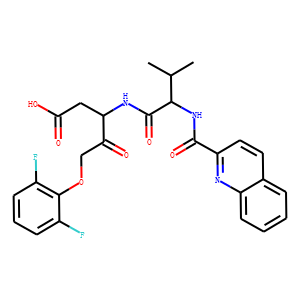| Reference | 1. Cytometry A. 2013 Jul;83(7):648-58. doi: 10.1002/cyto.a.22299. Epub 2013 May 6. <br />
Assessing main death pathways in T lymphocytes from HIV infected individuals. <br />
Massanella M(1), Curriu M, Carrillo J, Gómez E, Puig J, Navarro J, Dalmau J,
Martínez-Picado J, Crespo M, Cabrera C, Negredo E, Clotet B, Blanco J. <br />
Author information: <br />
(1)Institut de Recerca de la Sida, IrsiCaixa-HIVACAT, Institut d/’Investigació en
Ciències de la Salut Germans Trias i Pujol, Badalona, Spain. <br />
Increased lymphocyte death is a hallmark of human immunodeficiency virus (HIV)
infection. Although virological factors have been linked to this phenomenon,
increased cell death rates are still observed in treated individuals in which
viral replication is halted. To understand the nature of this remaining altered
cell death, we have developed a simple and fast assay to assess major cell death
pathways in lymphocytes isolated from HIV-infected individuals. The combination
of three factors: (i) antibody staining to identify CD3(+) CD4(+) and CD3(+)
CD8(+) cells, (ii) assessment of mitochondrial and plasma membrane function using
DiOC6(3) or JC-1 probes and vital dyes, and (iii) caspase inhibition, allowed for
the quantification of caspase-independent and -dependent cell death in CD4 and
CD8 T cells. The latter mechanism was divided in intrinsic and extrinsic
apoptotic pathways according to the sensitivity of the dissipation of
mitochondrial membrane potential to Z-VAD-fmk or Q-VD-oPH treatment. Our data
show similar results for both caspase inhibitors in treated infected individuals,
whereas Q-VD-oPH showed a more potent inhibition in viremic individuals, yielding
lower levels of intrinsic apoptosis. Comparison of DiOC6(3) and JC-1 probes
yielded similar results in CD4 T cells, allowing for a clear definition of death
mechanism in these cells. However, in CD8 T-cells, JC-1 showed heterogeneous
staining and detected significantly lower levels of cell death with a higher
contribution of intrinsic apoptosis. In conclusion, we provide a simple method to
assess CD4 T-cell death mechanisms in HIV-infected individuals. The reasons and
consequences of mitochondrial heterogeneity in CD8 T-cells require further
evaluation. <br />
2. Cell Death Dis. 2013 May 2;4:e619. doi: 10.1038/cddis.2013.143. <br />
Yeast techniques for modeling drugs targeting Bcl-2 and caspase family members. <br />
Beaumont TE(1), Shekhar TM, Kaur L, Pantaki-Eimany D, Kvansakul M, Hawkins CJ. <br />
Author information: <br />
(1)Department of Biochemistry, La Trobe Institute for Molecular Science, La Trobe
University, Bundoora, Victoria, Australia. <br />
Development of drugs targeting Bcl-2 relatives and caspases, for treating
diseases including cancer and inflammatory disorders, often involves measuring
interactions with recombinant target molecules, and/or monitoring cancer cell
killing in vitro. Here, we present yeast-based methods for evaluating
drug-mediated inhibition of Bcl-2 relatives or caspases. Active Bax and caspases
kill Saccharomyces cerevisiae, and pro-survival Bcl-2 proteins can inhibit
Bax-induced yeast death. By measuring the growth or adenosine triphosphate
content of transformants co-expressing Bax with pro-survival Bcl-2 relatives, we
found that the Bcl-2 antagonist drugs ABT-737 or ABT-263 abolished Bcl-2 or
Bcl-xL function and reduced Bcl-w activity, but failed to inhibit Mcl-1, A1 or
the poxvirus orthologs DPV022 and SPPV14. Using this technique, we also
demonstrated that adenoviral E1B19K was resistant to these agents. The caspase
inhibitor Q-VD-OPh suppressed yeast death induced by caspases 1 and 3. Yeast
engineered to express human apoptotic regulators enable simple, automatable
assessment of the activity and specificity of candidate drugs targeting Bcl-2
relatives or caspases. <br />
3. Biopreserv Biobank. 2013 Feb;11(1):12-8. doi: 10.1089/bio.2012.0023. Epub 2013
Feb 6. <br />
Development of pancreas storage solutions: Initial screening of cytoprotective
supplements for β-cell survival and metabolic status after hypothermic storage. <br />
Campbell LH(1), Taylor MJ, Brockbank KG. <br />
Author information: <br />
(1)1 Cell and Tissue Systems, Inc. , North Charleston, South Carolina. <br />
Insulin-dependent diabetes mellitus is one of the leading causes of death
world-wide. Donor-derived pancreas and Islet of Langerhans transplantation are
potential cures; however, postmortem ischemia impacts islet quality. The murine
βt3 cell line was employed as a model to study cell viability and proliferation
after hypothermic storage by comparing Belzer/’s Machine Perfusion Solution with
Unisol™ Solution. The objective was to determine which of these solutions
provided the best base line support for βt3 cells and to screen potential
cytoprotective additives to the solutions. Initial βt3 cell viability was similar
in the two storage solutions; however, better proliferation was observed after
storage in Unisol Solution. The caspase inhibitor, Q-VD-OPH, and α-tocopherol
improved viability in both storage solutions, suggesting that apoptotic pathways
may be responsible for cell death during hypothermic storage of βt3 cells.
Analysis of apoptosis markers, caspase activity, and DNA laddering showed a
reduction in apoptosis when these additives were included. The effects of
Q-VD-OPH and α-tocopherol were also synergistic when employed together during
either hypothermic exposure, post-hypothermic physiologic incubation, or
combinations of hypothermic exposure and physiologic incubation. These results
suggest that both supplements should be included in pancreas hypothermic storage
solutions and in islet culture media during post-isolation culture prior to
transplantation. <br />
|

